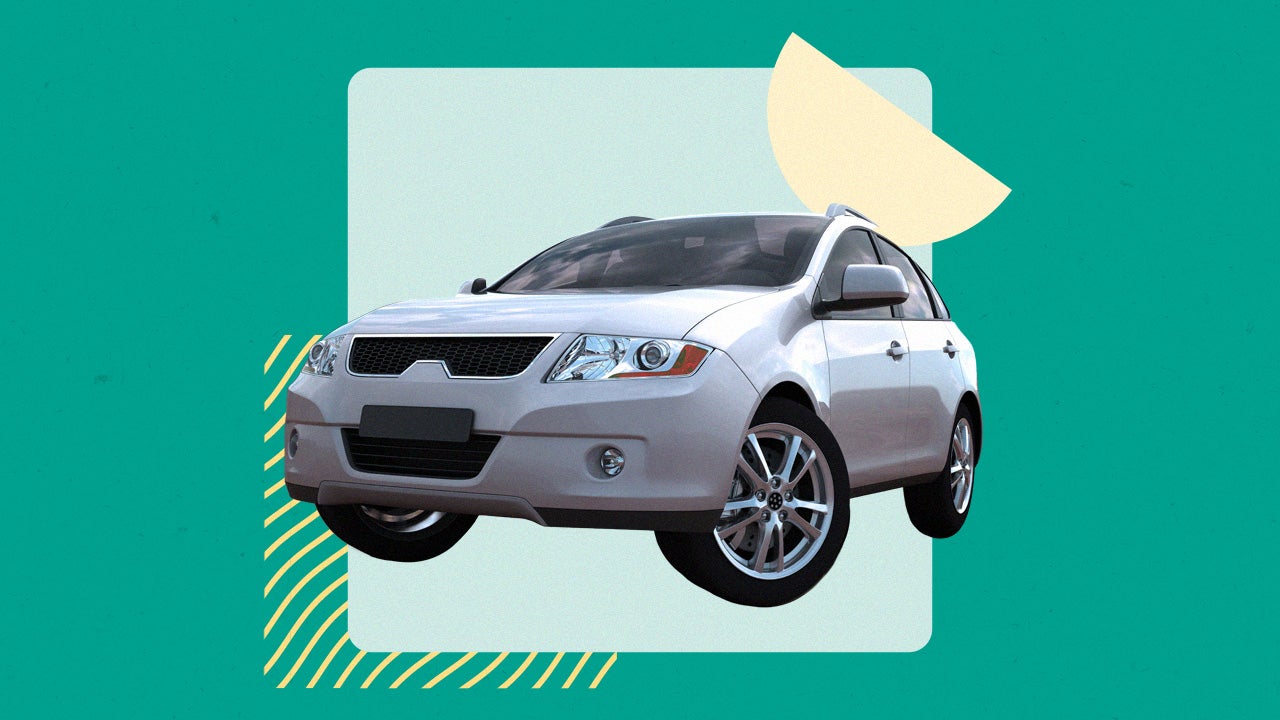Buying a car in Chapter 13 bankruptcy: How to do it




Key takeaways
- If you are still involved in the Chapter 13 bankruptcy process, you will need to file a motion with the court to purchase a vehicle.
- Qualifying for Chapter 7 instead may help you purchase a vehicle sooner than filing Chapter 13.
- Expect higher rates and less favorable terms because of the bankruptcy on your record.
It is possible to get a car loan while you’re in Chapter 13 bankruptcy, but it requires court approval. Speak with your bankruptcy attorney for guidance on finding the right lender. Then, they’ll file a motion with the court. You may be permitted to take on additional debt if you have a valid reason for the purchase.
If you are approved, consider your loan options carefully. Lenders are less willing to work with borrowers in the bankruptcy process. If you find a lender, expect high interest rates — and be sure you can handle the additional monthly payment.
How to get a car loan while in Chapter 13 bankruptcy
Unlike Chapter 7 bankruptcy, Chapter 13 bankruptcy does not eliminate all of your debts. Instead, you will be put on a manageable repayment plan that allows you to keep your assets while paying back your creditors. If you need to get a car loan while you are still on your repayment plan and before you’re discharged from bankruptcy, you may be able to do so if you qualify for an auto loan. Because the repayment plan does not include new debt, it will need to be modified.
According to Amy Lins, vice president of customer success at Money Management International, “The court recognizes that life happens, and it may be necessary to purchase a vehicle before the completion of the Chapter 13 repayment plan.”
She outlines five steps to take when you need an auto loan:
1. Make a new budget showing that you can afford the car payment
You must show potential lenders and the court that you can handle a car payment on top of your debt repayment and other financial obligations. “If the car purchase is going to impact other aspects of your repayment plan, work with your attorney to create a new proposed repayment plan,” Lins says.
Unfortunately, a low credit score will result in a high interest rate. The average auto loan rate for deep subprime borrowers is currently at 15.81 percent for new car purchases and 21.58 percent for used cars.
An auto loan calculator can help you estimate your monthly payment and see if it will realistically fit into your budget.
2. Find a lender that will work with Chapter 13 bankruptcies
Few lenders and car dealers will work with those in active bankruptcy, but they do exist, explains Lins. “Your bankruptcy attorney may be able to provide a list of lenders and dealers that will work with you, and you should check with your local credit union or bank.”
You may also need to find a dealer that works with subprime lenders to get the car financed. Despite slim options, do your due diligence and compare rates and terms from a few lenders. And because bankruptcy will damage your credit score, expect higher interest rates, fees and less favorable terms.
Lins states that you need to provide these items to the court in writing:
- Purchase price.
- Monthly payment.
- Interest rate.
“Keep the purchase price as low as possible and wait to exit bankruptcy and rehabilitate your credit before purchasing a more expensive vehicle,” she advises.
3. Get a sample buyer’s order
A sample buyer’s order is a financial statement provided by a dealership to the bankruptcy trustee. It is an example that includes the maximum interest rate for the vehicle choice or a similar equivalent.
This gives you and the trustee an idea of what payment you can expect. The resulting loan interest rate must not exceed the one stated on the buyer’s order.
4. File a motion with the court for additional debt
To take on additional debt, you must file a motion with the court. This entails bringing your order and having a solid explanation of why you need to purchase a car and why you need financing.
Perhaps your last car broke down and the repairs are so significant that, financially, it makes more sense to buy a new car. Or you live in an area where public transit isn’t easily accessible. This step is something your bankruptcy lawyer can help with.
5. Complete the purchase
Once the court approves the motion, you can obtain your car loan and get the vehicle. Make the purchase and begin paying the loan off with your other obligations. If you struggled in the past, learning to manage your auto loan may help you avoid missing payments or defaulting on your new loan.
Tips for financing a car after Chapter 13 bankruptcy
Once you complete your court-ordered debt repayment and get discharged, you won’t have to go through the courts to approve your car purchase. If you can, try to make do with the car you have until you are at least six months past discharge, Lins says.
Improve your credit score
Although bankruptcy can cause major harm to your credit, there are a few steps you can take to rebuild your credit score before applying for a new car loan.
- Getting a secured credit card: Taking out a secured credit card and using it responsibly can help strengthen your credit profile. “Charging and repaying small amounts over time will help rebuild a positive credit history,” says Lins.
- Enroll in a rent and utility reporting program: You can also look at services that will report rent and other bills, such as your cell phone, utilities and streaming services to help you build or rebuild an on-time payment history, Lins recommends. “These services usually charge a modest fee, but some are free,” she says.
- Keep your credit utilization rate low: If you still have open credit cards, try to keep your credit card balance below 30 percent of your total credit limit. Doing this could help improve your score because your credit utilization ratio accounts for 30 percent of your credit score.
Monitor your credit
In addition to rebuilding your credit, keep track of your score and history. This will help you see the progress you are making and what improvements can be made. Monitoring your credit regularly can also help you spot errors that can damage your score.
There are a few ways to get your credit score for free. You can order free reports once a week from AnnualCreditReport.com or sign up for a free credit monitoring service. American Express, Bank of America, Discover and Wells Fargo — among others — also offer a free monthly look at your credit score with their credit cards.
Shop around for a car in your budget
Shop for a car within your reasonable affordability range to ensure you stay on top of the payments. This will help you rebuild your credit and keep you on track.
Review your monthly expenses to determine how much a car payment your budget will allow. As a rule of thumb, car-related expenses, including the cost of gas, maintenance and insurance, should not exceed 20 percent of your total monthly budget.
Set a target price for your purchase using information online through websites like Edmunds and Kelley Blue Book, which list new and used car prices and insurance cost estimates.
Opt for a shorter loan term
While it may mean a larger monthly payment, a short loan term is ideal whenever you buy a car. This is because interest has less time to accrue — so you pay less overall. A long loan term may be appealing, but you will inevitably spend more.
However, you need to balance it with a payment you can afford. If an 84-month loan term is the only way to get a payment that fits your budget, look for a different vehicle. A lower purchase price — and borrowing less — may improve your chances of approval and prevent you from overextending your budget.
Make a down payment
The larger your down payment, the less you’ll owe on it in the future. Lenders may also be more willing to approve you since you will need to borrow less overall.
Look at your budget and see how much you can reasonably afford to stash away each month toward purchasing a car. Ideally, you should save as much as possible, but it ultimately boils down to your income, expenses and existing obligations.
Alternatives to taking out a new car loan
If you are unhappy with the rates and terms offered for a bad credit car loan or are having trouble getting approved, consider other options.
- Shop for a lower-priced vehicle: Even if the interest is high, your overall payment and how much you owe monthly will be more affordable.
- Wait until your credit has improved: Once you rebuild your credit, you’ll most likely qualify for lower interest rates, fewer fees and more favorable terms.
- Pay entirely in cash: Saving up and paying cash outright for a car means you won’t have to apply for a car loan at all, which will save you in interest and fees.
Bottom line
If you’ve filed for Chapter 13 bankruptcy, getting a car loan can still be possible, but there will be some hoops. Find a lender and create a reasonable budget that allows you to continue your court-mandated debt repayments. It’s important to shop around to find a car that fits your budget.
After you are discharged from bankruptcy, you won’t need court permission to finance a car. But the first step is rebuilding your credit by setting up a track record of consistent, timely debt payments. “It’s an old saying, but time really does heal all wounds, even wounds to your credit score,” Lins says.
Why we ask for feedback Your feedback helps us improve our content and services. It takes less than a minute to complete.
Your responses are anonymous and will only be used for improving our website.
You may also like


How to refinance your car loan

Preapproval for a car loan: How to get one

